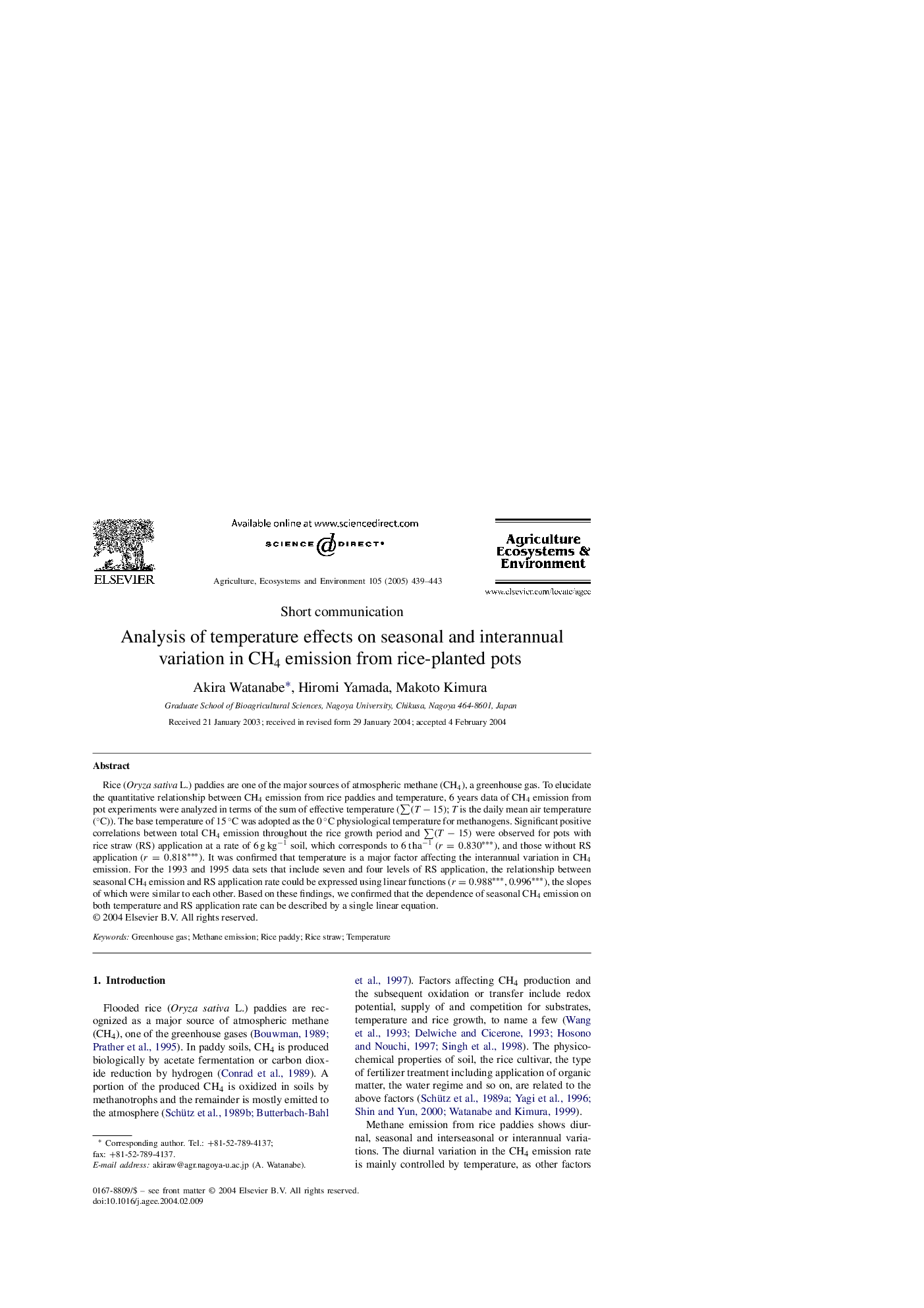| Article ID | Journal | Published Year | Pages | File Type |
|---|---|---|---|---|
| 8970911 | Agriculture, Ecosystems & Environment | 2005 | 5 Pages |
Abstract
Rice (Oryza sativa L.) paddies are one of the major sources of atmospheric methane (CH4), a greenhouse gas. To elucidate the quantitative relationship between CH4 emission from rice paddies and temperature, 6 years data of CH4 emission from pot experiments were analyzed in terms of the sum of effective temperature (â(Tâ15); T is the daily mean air temperature (°C)). The base temperature of 15 °C was adopted as the 0 °C physiological temperature for methanogens. Significant positive correlations between total CH4 emission throughout the rice growth period and â(Tâ15) were observed for pots with rice straw (RS) application at a rate of 6 g kgâ1 soil, which corresponds to 6 t haâ1 (r=0.830âââ), and those without RS application (r=0.818âââ). It was confirmed that temperature is a major factor affecting the interannual variation in CH4 emission. For the 1993 and 1995 data sets that include seven and four levels of RS application, the relationship between seasonal CH4 emission and RS application rate could be expressed using linear functions (r=0.988âââ, 0.996âââ), the slopes of which were similar to each other. Based on these findings, we confirmed that the dependence of seasonal CH4 emission on both temperature and RS application rate can be described by a single linear equation.
Related Topics
Life Sciences
Agricultural and Biological Sciences
Agronomy and Crop Science
Authors
Akira Watanabe, Hiromi Yamada, Makoto Kimura,
